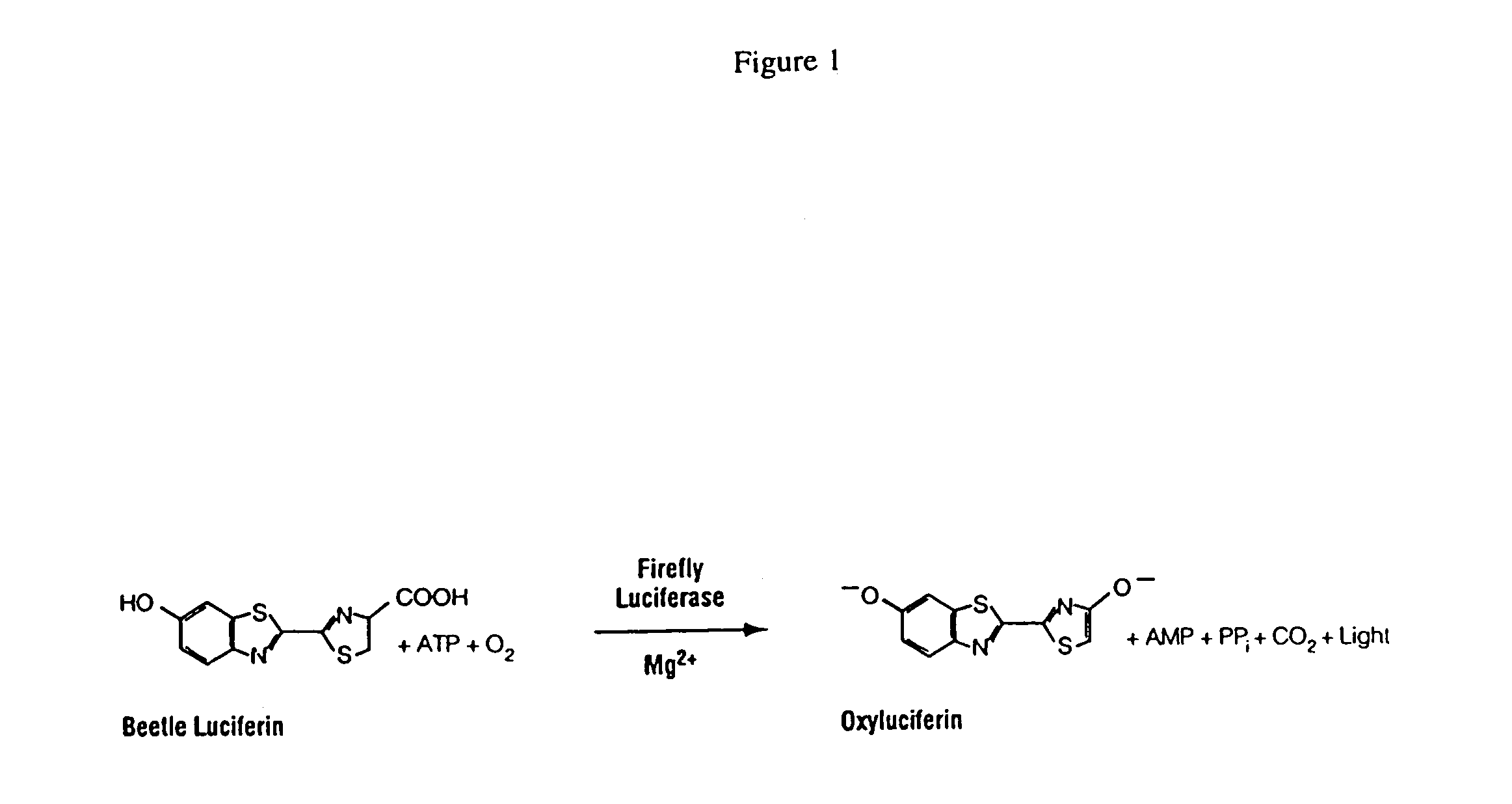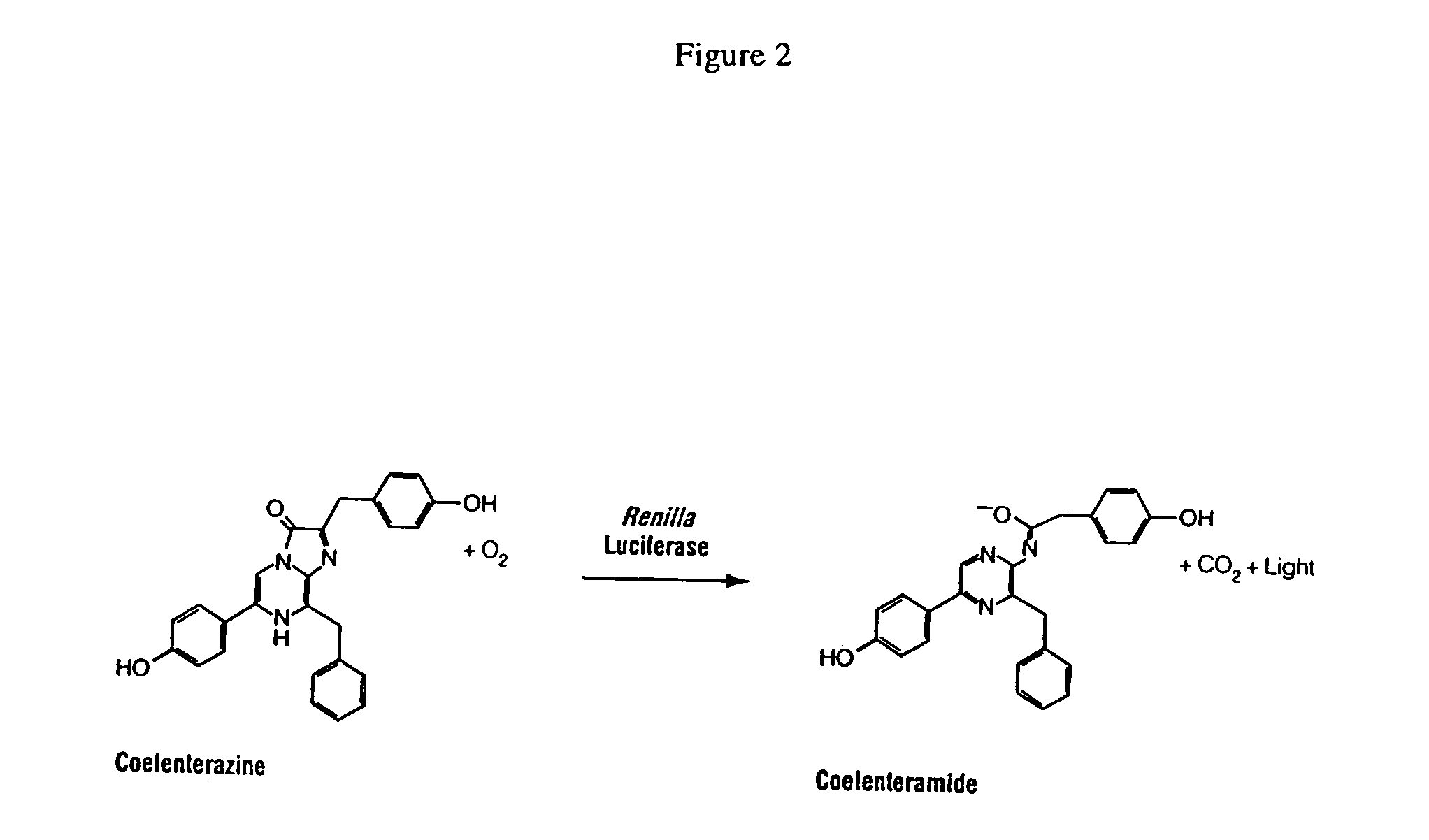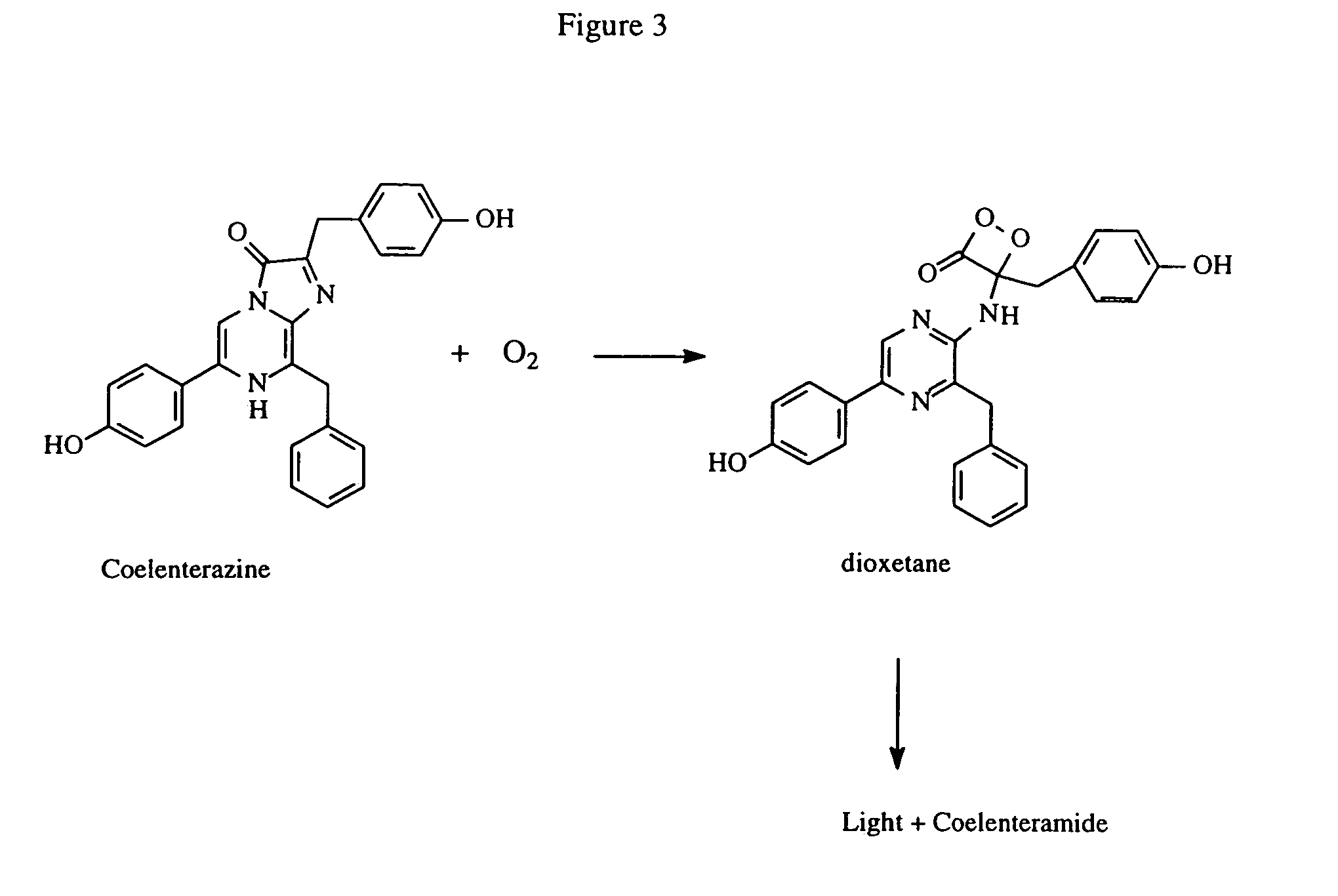Kits for increasing luminescence assay sensitivity
a luminescence assay and kit technology, applied in the field of cell biology and molecular biology, can solve the problems of limiting the usefulness of an analytical assay and reducing the ability to accurately measure the quantity of light resulting from the activity of analyte, and achieve the effect of reducing autoluminescen
- Summary
- Abstract
- Description
- Claims
- Application Information
AI Technical Summary
Benefits of technology
Problems solved by technology
Method used
Image
Examples
example 1
Improved Assay Sensitivity
[0091]Experiments to assess the ability of representative organic compounds (“compounds”) to increase luminescence assay sensitivity were performed under the conditions described below in Format A and Format B. Improved luminescence assay sensitivity is demonstrated by the ability of the compounds to decrease the analyte-independent luminescence resulting from the oxidation of coelenterazine, while causing lesser or minimal reduction to the analyte-dependent luminescence, i.e. coelenterazine in the presence of Renilla luciferase. It is demonstrated herein that the compound causes a lower-fold decrease in luminescence when the analyte of interest is present than the fold decrease in luminescence when the analyte of interest is absent. The enzymatic luminescence measurement may have an autoluminescence component.
[0092]In fact, for the majority of experiments described herein, an increase in the enzymatic luminescence measurement was observed when the compound...
example 2
Reduction of Autoluminescence Generated by Other Substrates
[0113]In addition to looking at the effect of representative compounds on autoluminescence generated from native coelenterazine (Promega Corporation, Madison Wis.) the effect of representative compounds on autoluminescence generated by other substrates was investigated. Coelenterazine analogs N, F, H, HPC, and CP were obtained from Molecular Probes, Eugene Oreg. Cypridina luciferin was obtained from NanoLight Technology, Pittsburgh, Pa. Beetle luciferin was obtained from Promega Corporation, Madison Wis. In order to see a more pronounced effect of the compounds, autoluminescence was enhanced as described in Example 1 by the addition of DMSO or detergent (1% Tergitol NP-9 / 1% Antifoam®) in Matthew's Buffer. Autoluminescence was also enhanced by addition of H2O2 or by raising the pH of the reaction containing native coelenterazine. Experimental conditions are grouped under Format C, sub-divided as follows:
[0114]
C1Alternative su...
example 3
Reduction of Luminescence Generated by Chemiluminescent Substrates CDP-Star® and Luminol
[0117]The effect of a representative compound on chemiluminescent reactions containing CDP-Star® or Luminol was measured. CDP-Star® is a stabilized 1,2-dioxetane chemiluminescent enzyme substrate, a high energy luminogenic molecule, used in the detection of alkaline phosphatase and alkaline phosphatase conjugates in solution and in membrane-based assays. CDP-Star® was obtained from Tropix PE Biosystems, Bedford, Mass. CDP-Star® substrate produces a light signal when it is activated by alkaline phosphatase. Alkaline phosphatase dephosphorylates the substrate, yielding an anion that accumulates due to its long half-life. Since the ultimate light production involves decomposition of the anion, a delay precedes constant signal output, resulting in a glow of light that lasts for hours to days. Luminol (5-Amino-2,3-dihydro-1,4-phthalazinedione) was obtained from Sigma, St. Louis, Mo. Luminol is a widel...
PUM
| Property | Measurement | Unit |
|---|---|---|
| volume | aaaaa | aaaaa |
| total volume | aaaaa | aaaaa |
| total volume | aaaaa | aaaaa |
Abstract
Description
Claims
Application Information
 Login to View More
Login to View More - R&D
- Intellectual Property
- Life Sciences
- Materials
- Tech Scout
- Unparalleled Data Quality
- Higher Quality Content
- 60% Fewer Hallucinations
Browse by: Latest US Patents, China's latest patents, Technical Efficacy Thesaurus, Application Domain, Technology Topic, Popular Technical Reports.
© 2025 PatSnap. All rights reserved.Legal|Privacy policy|Modern Slavery Act Transparency Statement|Sitemap|About US| Contact US: help@patsnap.com



